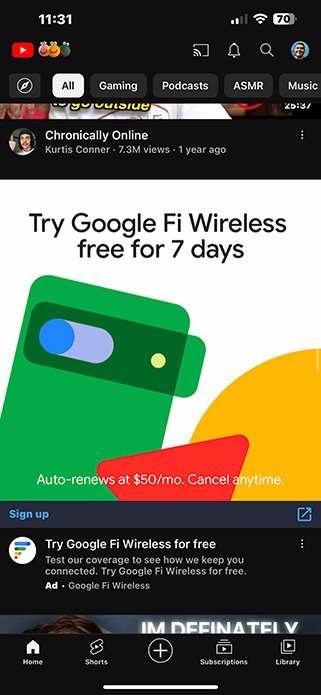Changing Your Point of View
It is hard to understand exactly what someone else wants.
Often as designers, we try to assume what people look for, what drives them, and how things make them feel.
However, through this process, we lose bits of the nuance—the true nature and feelings of a person.
This is why we create POV (point-of-view) statements.
Rikke Friis Dam of the Interaction Design Foundation describes how “A good POV will allow you to ideate and solve your design challenge in a goal-oriented manner in which you keep a focus on your users, their needs, and your insights about them.”
An effective POV statement should not directly give a solution but rather provide a broad scope for designers to start thinking about how they might solve the problem.
Let’s dive into what these POV statements look like, and how you can utilize them for your next project.
POV Statements in Action
In order to get started we need to know what we are looking into. So, as a guide, I chose three common apps that most people use, YouTube, Netflix, and Disney+.
Lets start with YouTube. First off we need to figure out what people are saying about the app. For this, we gathered three positive reviews, three negative review, and three suggestive reviews (which are proposing a change of some kind).
Once we have these reviews, we can start evaluating some concerns that users have. One of the ones that stood out to me is one user’s comment about the number of ads on the app.
This is something that Google has not tried to hide recently, where if anyone opens YouTube right now, they are most likely going to be greeted with an ad right away.
With this in mind, we can now start filling out our POV statement. For this, we just need a few aspects, a user, a need, and an insight.
Then we just put it together, making the POV statement for this concern: Users who watch YouTube videos need to constantly scroll through and skip up to two minutes of ads because it is frustrating to keep watching multiple ads over and over again.
Not too bad right? It summarizes what the user initially wanted and formulated it in a way that allows designers to more easily find solutions.
Let’s do another one with Netflix. One of the main concerns I found through the reviews was this one:
In this review, the user discusses how it is difficult to stop children and those under the age of 13 from watching PG-13 and R-rated content on the app.
Most other entertainment apps, like Disney+, have PIN systems so that kids can’t jump into Mom or Dad’s profile and start watching whatever they want.
With this in mind, I created this POV statement: Users who have children need to be able to hide adult content because they are likely to not trust their children to use the service, leading them to move to another platform.
With this statement done, designers at Netflix can now more easily find ways to prevent actions like this from occurring, designing a solution that not only fulfills business goals but makes the user happy as well.
Let’s look at one last one for Disney+!
Disney+ is on the newer side compared to apps like YouTube and Netflix, and with age comes stability, something that Disney+ most definitely lacks.
One of the main problems was how users’ apps would crash or get stuck on a loading screen when skipping back and forth while watching a video.
Okay, so the app is crashing, skipping back and forth, frustrated; Let’s make a POV statement!
For this, I wrote: Users who watch movies and TV shows need to be able to skip forward and back without the app crashing because users will get upset that the app is not working as intended and move to another platform.
And it’s as simple as that!
Once these POV statements are finalized, designers can take them further into the ideation phase and determine what would work best for the user to make sure that their problems are being solved as best as they can.
To view more POV statements and the full process, check out my document below, or linked here!
Dam, R. F., & Siang, T. Y. (2023, October 3). Define and frame your design challenge by creating your point of view and ask “how might we.” The Interaction Design Foundation. https://www.interaction-design.org/literature/article/define-and-frame-your-design-challenge-by-creating-your-point-of-view-and-ask-how-might-we







